5 things we've learned about raising farm animals
Raising farm animals, when done sensibly and humanely, benefits the small farm and the farmer. Over the years, we’ve raised chickens, pigs, horses, calves, goats, rabbits and sheep. And we have bred all of them too, except for the calves. We don’t keep breeding stock any more, but we still fill our freezers every year with our own pasture-raised meats, and we still sell the same to customers. Except for the horses; I have a recipe, but it serves 200, and I don’t have that many friends ;-)
Here's five things we’ve learned about raising farm animals. 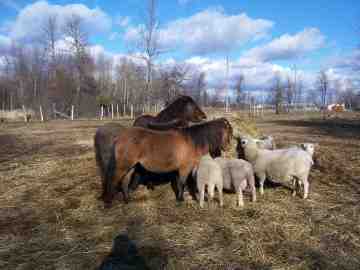 The mares were OK sharing with the sheep, the stallions not so much The mares were OK sharing with the sheep, the stallions not so much1. A little thought saves a lot of stepsRight about this time of year is a good time to start planning your crops, whether animal or vegetable. On a small property, you want to make efficient use of your space; and lots of farmers also work off-farm, so you need to make efficient use of your time.
We plot out where our gardens will be built and where our pigs, chickens and turkeys will spend the season. Since we raise our livestock using portable shelters and electric mesh fencing for containment and predator protection, we have a lot of flexibility. Planning is key to efficient use of space and time 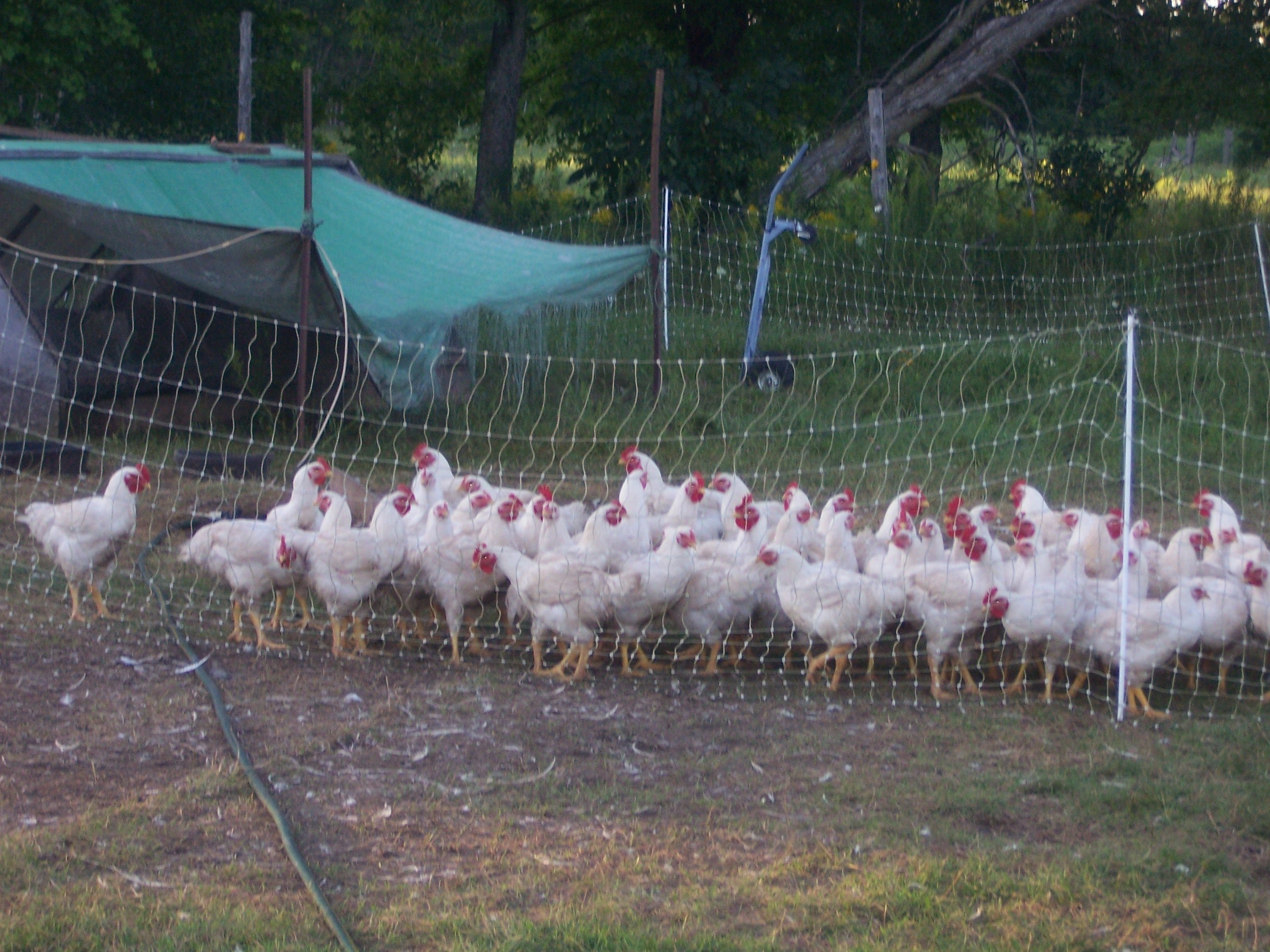 We have never lost a bird to a predator when protected by electric mesh We have never lost a bird to a predator when protected by electric mesh2. Good records support good planningWe know when we will start each ‘batch’ of animals, and when we will ship them. We know (approximately, but based on lots of experience and good records) how many times we will move them, and how much land they will take.
Similarly, we know what our garden space and rotations will look like. So we try to plot things out to for efficient working. We want the livestock to end up at a spot with easy access for loading. We also like to use them to clean up garden beds as the season progresses. Weeds and sub-par veggies are tossed to the birdies or the piggies to consume. In my mind, this is the best way to ‘compost’ And since we also enclose our garden in electric mesh
fencing, this can form one side of a chicken or pig pen, letting us make the pens bigger and reducing moves 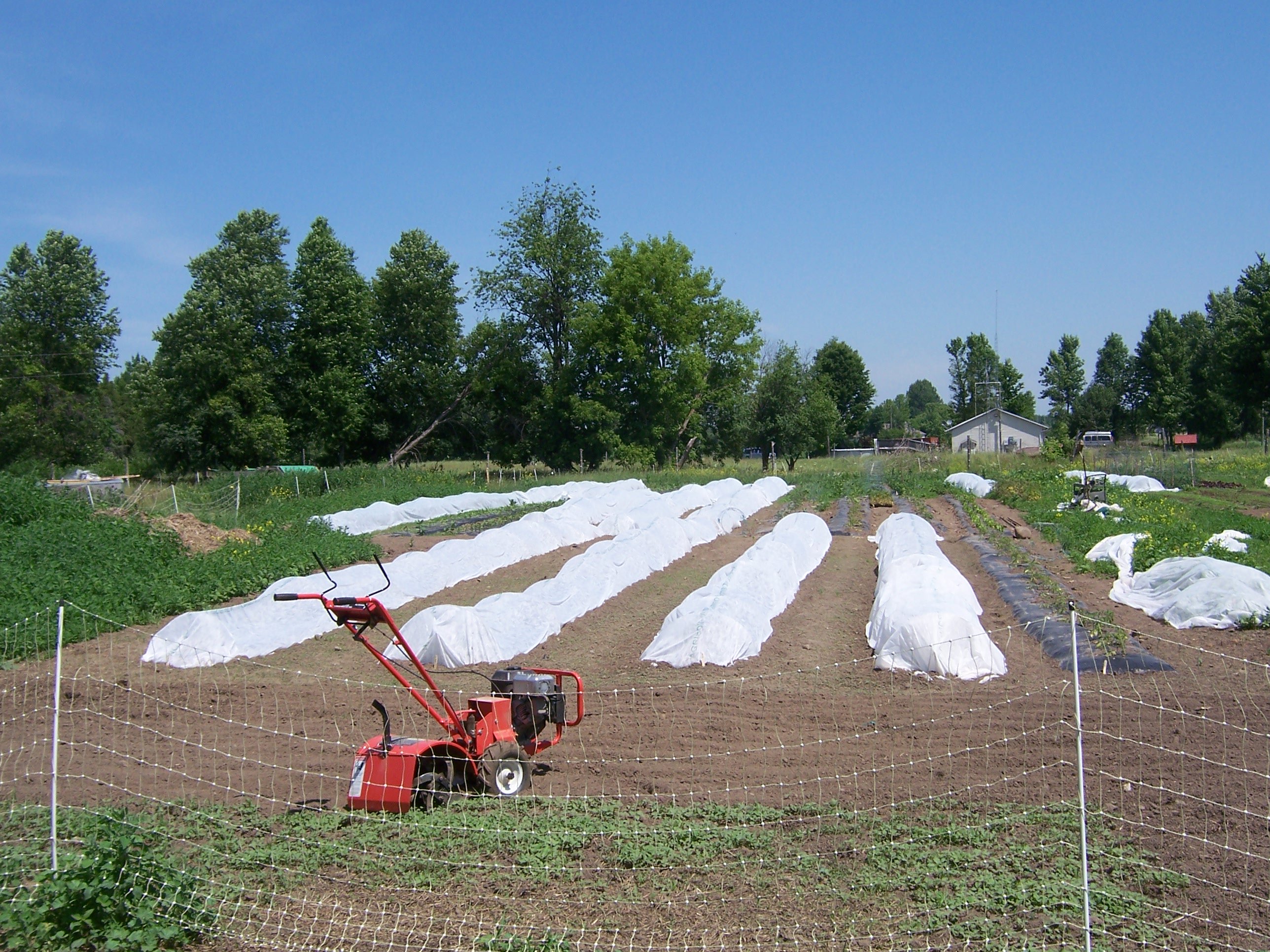 Electric mesh keeps critters, including our own, out of the garden Electric mesh keeps critters, including our own, out of the gardenTo explain that a bit, electric mesh fencing comes in a length of about 160 feet. If I enclosed a square pen (40 feet x 40 feet), the enclosed area would be 1,600 square feet. By the way, knowing the size of these 'blocks' makes it easier to integrate raising farm animals with vegetable crop production. If I only have to use the length for three sides, with the fourth side being the garden fence, the pen could be as big as 2,800 square feet (that is, 53 feet x 53 feet). This is a pen 75% larger just by using better planning.  I've got about a dozen of these, works for raising farm animals like sheep, goats, pigs, chick and turkeys. I've got about a dozen of these, works for raising farm animals like sheep, goats, pigs, chick and turkeys.3. Plan to reduce re-workSince the livestock is adjacent to the garden, we lay out hoses efficiently to provide irrigation for the garden and water for the animals. We keep big steel garbage cans of feed right at each animal pen. They move with the pens, and once a week or so I drive out with the truck and top up all the feed. Having food and water and fresh ground conveniently located means daily animal chores take about half an hour.
And, consider your site. Planning needs to be site-specific. We have some trees to the south and east of one of our fields. The partial shade extends 60-80 feet or so, depending on the time of year. While sun-loving crops don’t like the shade, the piggies and chickens adjacent to the garden appreciate it in the heat of high summer. Knowing this, we can plan our rotations accordingly. We can also plan for growing less heat-tolerant crops in that area. 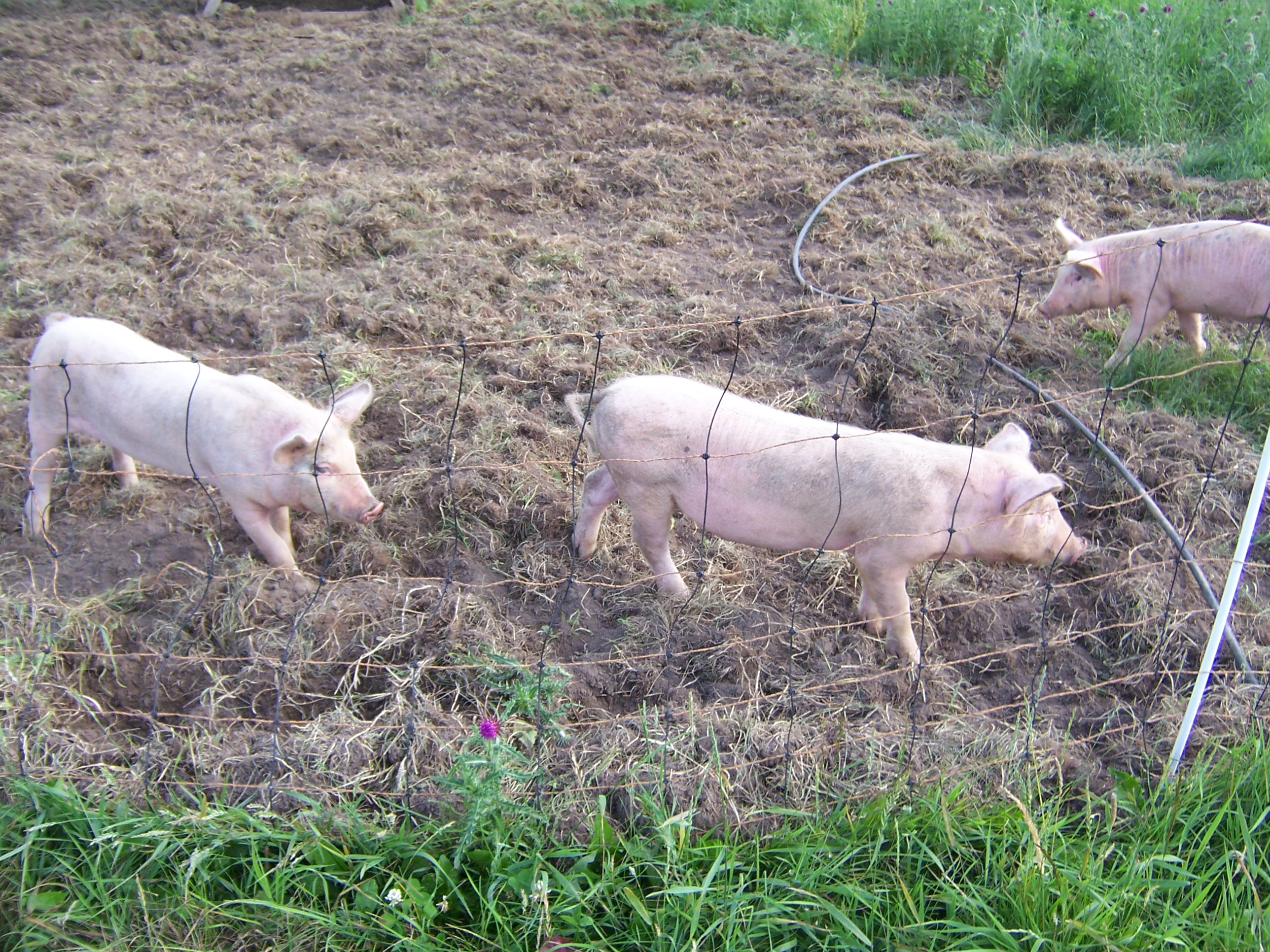 Piggies turning over a patch of ground that we'll plant to shade-tolerant crops next season Piggies turning over a patch of ground that we'll plant to shade-tolerant crops next season4. Consistency is key when raising farm animals
We try to do chores at the same time every day, and we stick to our schedule for moving pens and portable shelters. Farm animals like routine; the piggies and birdies come a-runnin’ at 7am and 7pm every day (in the height of summer). We also check and top up fresh water mid-day.
This also means we observe the animals at least three times a day, and check their fence and shelter. Electric mesh fence can ground out in tall grass, so I take a minute to walk the line and pull the fence out of any growth that may encroach (this is why we have a disconnect handle on every pen ;-) We like our pigs to follow behind the chickens by about a week. Regular moves make sure the chickens scratch up the ground, but still leave lots of goodies for the pigs to root out. If you leave the animals too long in one spot, manure builds up, and the piggies are more likely to root big holes in the ground instead of just turning over the ground. Sometimes they do that anyway if it’s really hot and they have insufficient shade and run short of water. And sometimes the pigs will treat the first pan of water as a jacuzzi, flopping in it to cool off and make a mud wallow. You might have to fill the water a couple times until they leave it alone. This is another good lesson in observing animal behaviour. 5. You don’t have to RAISE every animal to EAT every animalWe used to raise a calf every year (usually a Jersey bull calf, because we could get them for next to nothing). We would get a calf every spring, and ‘beef’ the previous years' calf after their second summer. This means we put a 18-20 month old beef in the freezer every fall. Jersey is great meat by the way, smaller cuts but very tasty, especially when raised on pasture.
We gave up on that after a few years; we weren’t really set to keep the calves year-round. I hate hauling buckets in the winter; and Jerseys, even steers, can be aggressive. I was the only one that could look after them; Suzie and the kids were not comfortable with them.
So, since I was also working off-farm, we decided to stop raising beef. BUT, a friend of mine about 20 km away (12 miles or so) raised beef cattle on pasture. He beefed about 35 heavy calves or so every year, plus some cull cows that went into hamburger. He was happy to barter pork and chicken for beef. A fair barter is a total win-win; we were each getting something at effectively wholesale cost (i.e. $50 worth of chicken does NOT cost me $50 to raise). No money changes hands, the tax-man is not involved, and we each got to concentrate on the farm animals we raised best. Bonus point about raising farm animals: It’s up to the human to resolve the problemsIn my experience, when a human-animal interaction goes wrong, 99% of the time, it’s on the human. In the preceding example, I knew the Jersey steers were a handful, and behaved accordingly. I was careful around them, and ultimately decided they weren’t worth the trouble.
You have to be calm, especially around large animals. Like I mentioned, we’ve raised horses, 550-lb plus British Large Black sows and boars, Horned Dorset rams weighing in at 275 lbs. with thick curled horns, and the aforementioned Jerseys (we didn’t poll them, either).
I would tell my ‘city friends’ that, in 20 years or so of raising livestock, the only animal that ever hurt me was a chicken. It was a frozen chicken that I dropped when taking it out of the freezer (unfortunately not just a joke, broke two toes). Stay calm, and farm on! Free One-Acre Farm Plan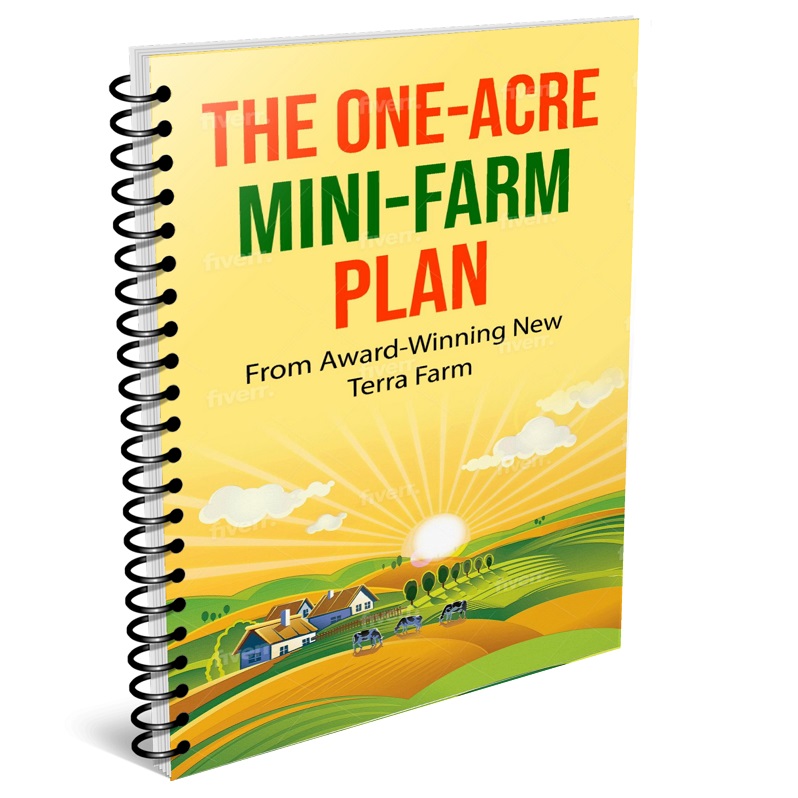 Get my FREE One-Acre Farm Plan and learn how to raise pigs, chickens and more, integrated with an organic market garden, to
make more money from your small property. Enter your best email and the Guide will be sent to you right away. Resources and RecommendationsSave 15% on a selection of farm and garden supplies. Read my Garvee review here More farm-grown reviews of products for the small grower and homesteader Grow for maximum profit Grow the Top Ten Most Profitable Vegetables CSA farms have the highest net income of all market garden models. Bootstrap Market Gardening shows you how to launch one of your own. How to raise pigs and chickens on pasture is included with my Homestead Book Bundle Raise laying hens in as little as 50 sq ft. Fresh eggs for breakfast (and maybe barter): Read my review of the The Eggs Factory here
|
See Something You Like? Share!
Got questions to ask, stories to tell?
Share your organic market gardening question, or comment, or story.
Recent Articles
-
Farm grown reviews of products recommended by New Terra Farm
Dec 04, 25 06:26 AM
Find great farm and garden products in my farm grown reviews -
Best Chicken Coop and Accessories for Small Farms and Homesteads
Nov 30, 25 09:18 AM
Looking for the best chicken coop? Here are the top coops, accessories, nest boxes, and gear to build a safe, productive poultry setup. -
Community Supported Agriculture Marketing Ideas To Sell Out The Season
Nov 05, 25 05:18 AM
Authentic Community Supported Agriculture marketing ideas to grow loyalty, boost sign-ups, and sell out your CSA every year






